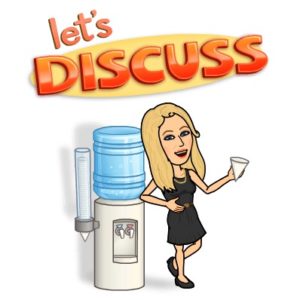
Trade shows are big business. While the trade show industry is experiencing moderate growth between 1-2% this past year, according to the Center for Exhibition Industry Research, events revenue has hit a whopping 13.2 billion dollars in the U.S. If you’re a small business, you may not have ventured into the trade show arena but there are several reasons you should consider it.
First, know that even though there are extremely large shows that cost thousands of dollars to attend and require huge double-decker exhibit booths to make an impression, they aren’t all like that. While we are using the word “trade show,” we’re doing so liberally. We are not necessarily referring to a trade association conference with an exhibitor’s floor but any event that allows you to showcase your business at a booth.
Ready to learn everything you never realize you needed to know about trade shows and exhibits? Let’s get started.
Why Attend Trade Shows?
The simple answer is marketing. It gets your team out of the business and in among the people. Attendees who may not have otherwise reached you or heard about you, can find you and learn more about your business. But trade show traffic isn’t the only reason to attend.
You Should Attend Trade Shows Because of:
- the reputation. Attending a trade show denotes a certain level of success. You aren’t operating out of your basement (if you are, you’re hiding it well).
- support. Trade show attendance shows you support whatever organization is hosting it.
- networking. Attendees often come for networking and you should too. Whether you’re meeting attendees, sponsors, or other exhibitors, you may find a nice complement to your business that will open new avenues.
- learning. Some trade shows invite exhibitors into learning sessions and other programs. You might learn something of value for your business.
- presenting. Whether you’ve been asked to present or you’re simply speaking to potentials from your booth, participating in a trade show can teach you a new way of connecting to potential customers. How you connect face-to-face when you have only minutes to make an impression helps you hone your elevator pitch and get really good at engaging people quickly.
So maybe you’re sold now and have decided you need to attend a trade show. How much will that cost you? We’ll cover that next.
What Does It Cost to Attend a Tradeshow?
While on average it costs $100-$150 per square foot of exhibitor space, there’s a lot that goes into the cost calculation. The price varies greatly by show but here are some of the things you’ll want to inquire about and budget for:
- Booth rental space. Every show will charge you something for being there.
- Booth design. Trade show booth banners, signage, and display components will all cost you money but you might be pleasantly surprised how inexpensive 4-color printing is now, especially for a smaller booth with flags and table skirts.
- Electricity. This could be a fee too but if you’re just setting up a table and handing out brochures and swag, this may not be necessary.
- Build out and break down. Some convention centers are unionized and require that you use their people to build your booth and tear it down. This is not always the case, so make sure you understand any costs associated with the venue.
- Employee apparel. If you want your employees to look alike and be recognizable at the trade show, you’ll probably want to purchase some embroidered shirts or at least come up with a dress code. Here’s what you should think about when it comes to clothes.
- WiFi. Yes, most trade show organizers charge for that.
- Collaterals. Brochures, paper info, booklets, business cards, etc. Even if you have these on hand, you should factor them into your costs.
- Swag. Yes, you want to give them something when they come to your booth. Many of our customers have different swag for different types of attendees. For instance, there’s the swag that brings people to your booth. There’s the swag or branded incentive that gets people to buy (this is generally more expensive but depends on the cost of your product or service). And there’s swag they give as a token of appreciation to current customers.
- Travel and lodging. Even if the trade show is in your back yard, you have mileage. If it’s not close by you’ll have airfare, lodging, meals, and possibly client or potential customer entertainment expenses.
- Shipping. The goods have to get to the show somehow. Even if you carry your own display by car or plane, you likely need to ship collaterals. They get heavy.
- Show services charges. Larger trade shows will use this fee but it will include everything from electricity, WiFi, plumbing, cleaning, and more. Just make sure you know whether that is a necessity or whether your show doesn’t include it. If it’s not included, find out what the a la carte charges are for these things.
- Graphic design. Unless you do all of your own design work, you’ll likely have a cost involved for design work on your business collaterals or booth design. Even if you have an in-house designer, factor in the cost of the work they are doing. Every minute they spend on your trade show is a minute they are not spending on your clients. This is particularly important because…
Most trade shows that you attend for business purposes are tax deductible. That means the costs above can all be written off as business expenses. But since we’re promotional marketing gurus, and not tax ninjas, you should consult your favorite tax professional.
While we’re talking about money, let’s talk about return on investment. Since a trade show is a business undertaking, you want to make sure you get a good return on your investment. You want customers, or at least leads, out of your efforts. Here’s how you know if it’s a good investment of your time and resources.
Is That Trade Show Right for You?
Is attending this trade show the right thing for your bottom line? Let’s see by lining up a few things:
- Add up all of the costs of attending this show.
- Then take the average spend of a customer.
- Divide the total costs by what your average customer spends and you’ll know how many customers you need to get from this undertaking.
- Next, review your sales materials. How many leads does it generally take you to land a customer? Three pitches? More? Since you know how many customers you need to break even, you can now calculate how many leads you would need to generate.
- Finally, look at how many hours you’ll be exhibiting. Divide the needed leads by the hours you’ll be there actively promoting your company. How many leads does that break out into an hour? Is that a doable number? Think not only of your team’s capacity but also the size of the trade show. For instance, if you need 20 leads an hour for 10 hours and the show only attracts 500 people, you’re going to be challenged.
Keep in mind, that customers may not be the only reason you are considering this trade show. If you’re trying to get your name out there, you may gauge your success on how many brochures you handed out and how many people are talking about you and your booth on social media.
Be aware of what your goals are before committing to the show. If you’re on the fence. talk to the trade show organizer. They may be able to provide some data from past shows that will help you make a better decision.
Ideas for Inexpensive Booths
One of the major costs we talked about in the budget section was the booth rental and booth design. While it’s difficult to save on booth space, the rental is the rental, it is possible to find less expensive venues. We’ll get to those in the next section. Here we’re going to go over how you can save some money on the design itself.
- Use an inexpensive banner over a sheet as a table skirt.
- Use a basic table skirt but upgrade your signage. The look is modern and sleek and flags are often less expensive than the custom-made skirting that may only wo0rk for one exhibit.
- Arrange your collaterals in an appealing way and use them as decor.
- Create a seating area instead of a table/booth. Think about using bar stools and bistro tables to make the area more inviting. Or go for fun with bean bags.
Need a few more ideas? Check this out.
Again, the booth rental can be a major expense. So how can you get the benefit of attending trade shows on a less expensive level? There are plenty of entry-level opportunities as we’ll see in a bit. Remember when it comes to ROI, you don’t need to spend a lot of money on the show to get a good return. You simply need to go where your potential customers are. Keep that in mind when considering a show.
Suggestions for Inexpensive Shows That Are Good for Business
When considering a trade show or exhibition, the most important thing to decide is whether your audience is there. Talk to the show or event planner and find out as much as you can about the demographic that regularly attends. Here are some events that might be a good fit, or at least a good start.
- local chapters of a trade association in your industry.
- business expo at your chamber of commerce. Keep in mind you could have several chambers in your area that all have special shows or exhibitions throughout the year. Some have micro shows based on industry and some have exhibits at new member gatherings.

- libraries sometimes host business or hiring expos.
- universities and community colleges.
- economic development agencies.
What have we missed?
Is there something you have been wondering about when it comes to trade shows?
Drop us a line and we might answer it in a future blog post.






Leave a Reply